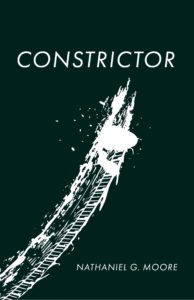P oet Heidi Greco has reviewed Nelson Ball’s poetry collection In This Thin Rain for the fine literary journal Prairie Fire. It’s a beautiful tribute to one of Canada’s literary legends.
In This Thin Rain
by Nelson Ball
Toronto: Mansfield Press, 2012, ISBN 978-1-894469-66-1, 82 pp., $16.95 paper.Reviewed by Heidi Greco
Spare. That’s what these poems are. In fact, two of the poems in this collection contain fewer words than the book’s title.
Yet their size leaves them no less poetic than if they were longer. In fact, their compact quietness is completely appropriate, now more than at any time in Ball’s career. With 25 books to his credit, this one comes out of a time of grieving. During its writing (2009–2011), he lost both his wife and his mother.
His wife Barbara served as his first reader. In notes at the back, Ball informs us that she “read drafts of poems in this book written in 2009” (79). He offers the fact that they were together for 44 years and that Barbara was an artist – a painter. Ball credits her with giving him an appreciation of colour. This is evident in the poems, especially this one, “Colours,” a piece that is dedicated to his wife:
Yellows and browns –
a field of beans ripening in Septembersunlight now
more yellow than whitecoloured light, reflecting rich ochres
of the field of beansthis day
in September (45)Born in a period of mourning, these poems follow the natural order of the year, with the seasons progressing from spring to spring, delineated in part by the migration of birds.
Winged things of all sorts move the poems forward. There are sketches of turkey vulture, crow, or heron “With [its] remarkably laboured / flapping of wings”(36). There’s even an observation of the oxymoronic winged being in a piece called “Anomaly”: “Cement / angels” (40). And yes, that is the poem in its entirety.
Flies also serve as a touchstone for the seasons. Ball brings such careful scrutiny to them, they take on an air of surprising dignity, as in the poem “January fly” (one of the longest in the book, extending onto a second page). He portrays “a drowsy January fly” as it tries “to walk up the baseboard” (72) and then attempts to fly. To most of us, a housefly in winter represents a creature that would merely be a nuisance. But Ball presents him respectfully as one of winter’s tough survivors – one who, like himself, makes it through “difficult / days” (73).
Yet the tone of this book is far from sombre. A number of clever examples of wordplay are included. These playful discoveries with language are an element I associate with Ball’s writing over the years. My favourite of these is the rhumba-like, “Drumbeat for Drumbo,” a piece credited to the spell-check program on his computer.
But whether he’s playing word games with the computer or contemplating the loss of his soul mate, readers are fortunate that Barbara’s death wasn’t enough to keep Nelson Ball from finishing this fine little book.
(Heidi Greco lives in the Lower Mainland of British Columbia, a region where she has learned to enjoy strolling in the thin rain.)




























